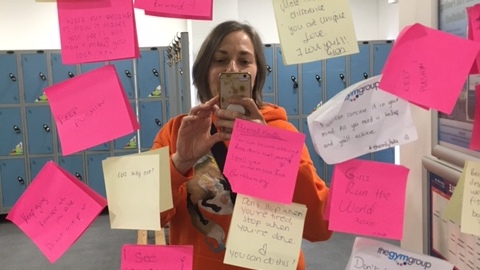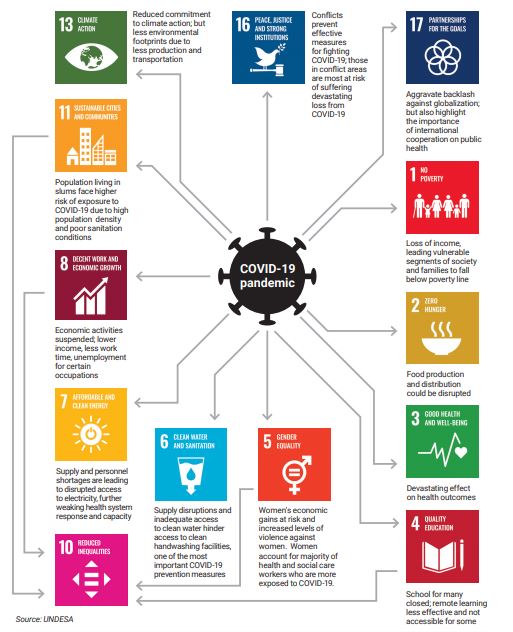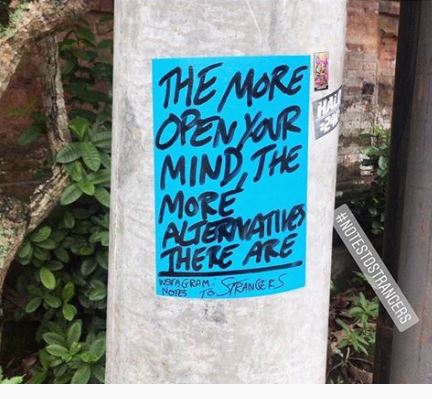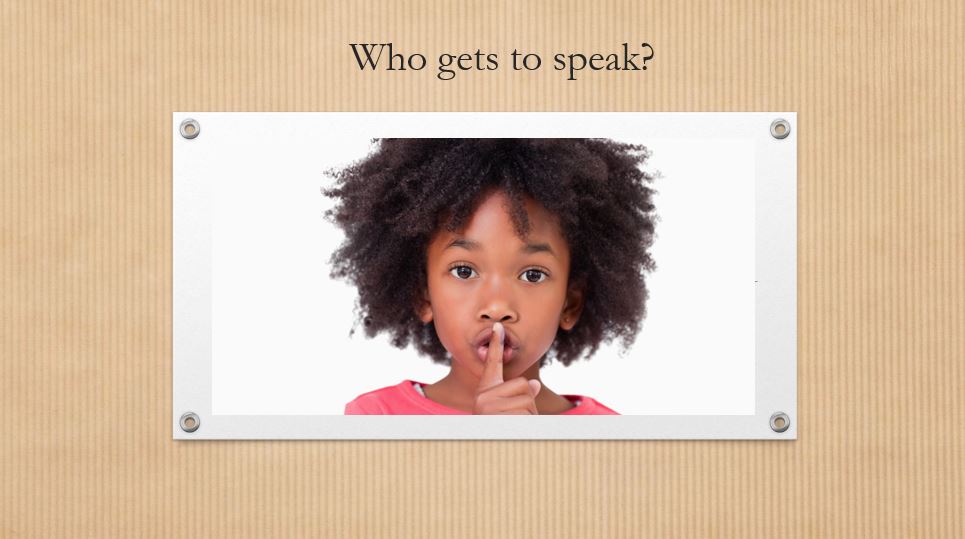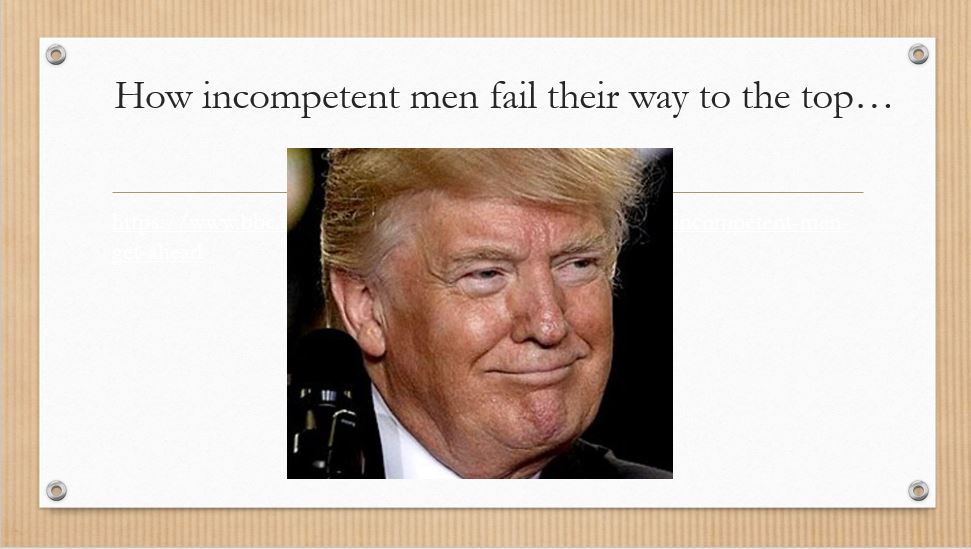Over the past six months, I have been supporting school staff who are on a DfE-funded Mental Health Leads course. Having carried out about 120 coaching conversations with staff members leading on this work in their schools, I feel that there are some clear themes coming through that we need to pay attention to. I also have read a number of research reports which have been useful to support my understanding of the picture nationwide. The following are some thoughts on what I have learned about mental health and staff wellbeing in schools.
Schools in context
When it comes to mental health, schools are influenced to both push and pull factors. ‘Push factors’ are those which can be influenced by the organisation such as leadership practises, school policies, pay and conditions. ‘Pull factors’ are those which may not be influenced by the organisation such as health issues, staff moving away, pregnancy and maternity.
There are interdependencies between the push and pull factors which should not be overlooked. According to the UK’s Health and Safety Executive, teaching staff and education professionals report the highest rates of work-related stress, depression and anxiety in Britain. The wellbeing of the school workforce is of concern because over 947,000 educators currently work in state-funded schools in England, and research has shown that the wellbeing of teachers affects both their retention and their students’ outcomes.
Some of the factors identified in the Ofsted research which impact on how teachers feel at work are:
- health (how we feel physically and mentally)
- relationships with others at work
- purpose (including clarity of goals, motivation, workload, ability to influence decisions)
- environment (work culture, facilities and tools)
- security (financial security, safety, bullying/harassment)
Pull factors for schools
The education sector itself
While teachers have strong moral purpose and can be positive about their workplace and colleagues, they expressed disappointment with the profession as a whole whereby the advantages do not outweigh the disadvantages e.g. workload driven by national policy, how the profession is regarded externally (although this has risen between 2013-18 according to the EPI study), feeling dictated to by policy-makers.
According to the Education Policy Institute (EPI) study, secondary school teachers show lower levels of happiness, life satisfaction and worthwhileness than primary and early years teachers but also have lower levels of anxiety despite reporting high levels of work-related stress and less manageable workloads. (It would be worth exploring gender differences in this sector). Also in the EPI study, teachers’ view of their profession has worsened since 2013 significantly. Interestingly, the Education Support Teacher Wellbeing Index 2021 found that teachers identifying as Black and Ethnic Minority reported lower levels of stress than their white peers, and they are following this up with further research to explore why this might be.
Lack of agency
Teachers do not have enough influence over policy, either at national, local or school level. This is increasing with gradual weakening of the unions, increased pressure on schools from government to academise, and to tackle many wider societal issues which arise from policy-based and structural inequity e.g. gender and ethnicity pay gaps, poverty, general mental health crisis. This can be exacerbated if they are part of a multi-academy trust (MAT), where this adds an extra level of centralised decision-making on which teachers are not consulted.
Ofsted
Increased administrative workload, feeling of threat, leadership threat levels from impending Ofsted inspection and changes in framework lead to additional workload. The suspension of Ofsted inspections during the pandemic was triggered to prevent staff burnout.
Again, MAT structures can mean additional levels of mock-inspection, monitoring, scrutiny and compliance activity.
There is recent pressure on schools rated outstanding by Ofsted that have not been inspected for many years, and who will likely be downgraded as the inspectorate seeks to reduce the number of schools rated outstanding overall.
Work-life balance
The workload is high and this is affected by increasing administrative tasks, marking, staff absence (exacerbated by the pandemic), staff shortages, diminishing external support specialists (e.g. SEND), behaviour management of children with increasingly complex needs, frequently changing government policy, lack of skills and training.
The TES survey report shows that 67% of UK teachers said their workload is unmanageable in 2021. In 2020, this figure was 22%.
The Education Support survey showed that 70% of staff that have considered leaving the sector attributed this to workload (80% for senior leaders).
While many sectors have been able to give more flexibility around working arrangements including condensed hours and working from home, this is less possible for schools.
Funding and resources
Decreased human resources increase workload, efficiency, and can mean taking on responsibilities outside of a staff member’s area of expertise (high risk strategy for performance and progression). Lack of physical resources can impede teaching quality and impact of teaching. This is especially acute for smaller schools which will need to fund a leadership team and cover material costs of running a school on smaller budgets.
Funding is and will increasingly be inadequate for schools to even cover their staff costs.
Relationships with parents/carers
Parental/carer expectations and the high-challenge, high-threat climate in schools regarding outcomes for children and inappropriate communication between staff and parents can be stress factors. The marketisation of education has created the notion of parental choice and pressure on schools to deliver in order to retain popularity with parents/carers.
The Covid 19 pandemic
The pandemic, working from home, remotely or in blended ways has created a worldwide re-evaluation by many around the meaning of work and a ‘great resignation’ as people move to different patterns of work, professions and relationship with the world of work. While leading up to the pandemic, 1:3 teachers left the profession within their first five years, this trend starts with the fact that 1:6 leave within just one year. In the Education Support survey, 54% of staff said they considered leaving the sector in the past two years due to pressures on their mental health and wellbeing (63% SLT, 53% teachers)
Staff report that they feel much less confident performing their role now than they did in 2020 2020 79% felt confident compared with 38% in 2021).
Push factors for schools
Students’ behaviour
Low-level disruption impacts on teachers’ wellbeing and impacts on learning. Inconsistency and lack of support around behaviour management leaves teachers feeling exposed. The pandemic has also impacted on relationships with students, with the TES survey showing that while in 2020 83% felt they and colleagues had good relationships with students, but in 2021 this was at 58%.
Lack of support
Teachers feel unsupported by line managers in appropriate ways and solutions are often offered when it is too late. Not enough recognition for work done well, positive feedback, professional dialogue, development and nurture rather than monitoring and target-oriented performance management. About a third of teachers report that they don’t get enough support with just under 50% saying they get some support but that it isn’t adequate.
Lack of agency and trust
The TES survey showed that nearly 50% of 2,995 UK respondents to their survey reported that they don’t have a voice about how things go at their school. 44% of staff in the Education Support survey say they feel fully trusted by their line manager with 91% of those who felt distrusted reporting it impacts negatively on their wellbeing.
Lack of training and professional development opportunities
Nearly half of respondents in the TES survey said there were no opportunities for them to develop in their current role, and a similar number thought they were not working towards personal goals.
74% of teachers in the Education Support survey say that their Initial Teacher Training courses did not prepare them well to manage their own or their students’ wellbeing.
Poor leadership
The TES survey shows that less than 40% think that their school has a vision for the future. 16% feel that information is shared effectively between staff in their school. The pandemic has forced physical restrictions on ad hoc communication between staff outside of their ‘bubbles’ and the volume of emails has become so great that messages can often be missed.
The EPI study shows that SLT have the highest levels of both positive wellbeing and anxiety.
The Education Support survey shows that 42% of staff consider their organisation’s culture as having a negative effect on their wellbeing and 27% of staff feel the relationship they have with the SLT impacts on their wellbeing most negatively.
How might we be tackling some of these issues?
Schools can limit their response to staff wellbeing and mental health to being reactive to poor mental health and wellbeing through offering Employee Assistance Programmes and taking out insurance to cover costs should a member of staff have to take time off. Other responses can be around ‘compensatory’ measures without addressing issues which may be connected to push factors listed above. These can range from yoga and meditation sessions, small gestures like cakes and treats, through to tangible offers around revisiting workload around marking and feedback, or offering each staff member a ‘mental health’ day that they can take once a year.
According to the Mercer study on digital healthcare innovation, a third of companies plan to grow their virtual or telehealth solutions as part of their employee support benefits. The report says that employee-focused digital technology can support staff to contribute their best if they are able to develop new leadership skills, can target feeling stress and burn-out swiftly, and if the organisation can shift the culture around mental health, and invest in meaningful programmes of support targeted at employees’ needs.
The following are some of the ways which companies offering wellbeing solutions for staff may be able to tackle some of the issues identified:
Helping line managers know how their teams are doing
Regular staff surveys can create a view of staff wellbeing which is not possible to gain in the bustle of day to day life at school. These are only as good as the line managers are at using the results in positive ways. Where they are used as surveillance tools, this is extremely negative for staff who then either don’t participate, or limit how honest they are.
Anonymous feedback from teachers
Many schools say they have an ‘open door policy’ for staff to come and ask for support but teachers are often afraid that by reporting a problem, they will become the problem. Anonymising feedback is a good way to know what is happening without letting bias creep in. Again, in some coaching calls, staff described tactics used by line managers to try to find and ‘have a word’ with those they perceived as negative or lacking resilience who reported feeling unhappy at work.
Helping teachers set goals professionally and personally
Teachers being in dialogue with themselves around goal setting relieves the pressure of goal-setting being always around performance management targets and being held accountable to management. Unfortunately, the consensus from most staff I spoke with was that there is no time outside of performance management routines to have professional conversations. Some, however, had fantastic cultures which included strength-based leadership and peer coaching as powerful methods to promote professional growth and autonomy.
Staff recognition and appreciation
Time pressures and workload often mean this is left unsaid and the only feedback teachers get is when things aren’t going well. Other times, when this is given, it can feel tokenistic, especially if the basics of good people management aren’t in place.
Whole-school communication about students behaviour and wellbeing
CPOMs and other online tools have created useful tools for teachers to quickly and effectively register concerns about their students. Where they are able to form a team response, teachers feel supported and although concerns for students are high, they don’t feel as much burden dealing with issues alone.
Supporting leaders with Ofsted compliance around staff wellbeing
In my investigations into technology to support staff wellbeing, one of the apps I explored links their offer directly to Ofsted compliance. Being able to show how you monitor, respond to and support staff wellbeing is helpful. Again, when it is done as a performative act to satisfy the impending threat of Ofsted, that’s a red flag.
What are schools doing well?
Based on over 120 hours of listening to Mental Health Leads talking about mental health and wellbeing in their schools, here are some insights.
Workload is a massive issue
Schools have tried to tackle this through a combination of looking for ideas to reduce workload, especially those that are evidence-informed like moving to a whole-class feedback and no marking policy. Other workload-related ideas intersected with trust and autonomy, which we know influence employees’ sense of wellbeing at work and job satisfaction. So, for example allowing teachers to do PPA time at home, having restrictions on when emails can be sent and/or read, kicking-out times from the school site, finding easier ways to communicate that aren’t email-based (or WhatsApp groups) like Teams or Slack.
HR and the way people are treated
Schools that had in place clear, people-centred policies and had done training around the sorts of life-cycle and seminal moments issues that staff face seemed to fare better in terms of protecting staff mental health and wellbeing.
For example, generous and equitable practice around parental leave, fertility, bereavement, family break-up, attending children’s plays and medical appointments, menopause, moving house, duvet days.
Professional development pathways
In small schools and those with low staff turnover, staff can become frustrated that there is nowhere to develop. The schools that seemed to be aware of this had developed firstly a way to link performance management and professional development to building on strengths rather than correcting weaknesses. Some had gone as far as thinking about using something like Strengths Finder 2.0 or an adult equivalent of SDQs to map how everyone was using their strengths. Good schools will be building development pathways that tap into local, regional and national CPD offers, networks and opportunities. Others will align themselves with a professional body like Chartered College of Teaching to ensure that teachers can develop through action research, special interest groups, NPQs, Masters courses and more.
Significant and regular development conversation
One big missing element was significant and regular development conversations that happen frequently and that aren’t tied to performance management cycles ie. not an annual ‘have you met your targets?’ conversation.
Regular one to ones, and knowing there is at least one person within the school who has your best interests at heart is important. This could be solved through a peer to peer coaching model with monthly sessions covering ‘What’s going well?’, ‘What could be even better if..?’ and ‘Where can I help you?’
Some basic coaching training and matching people in cross-hierarchy pairs would create an interesting dynamic and space for professional coaching conversation.
Equality, Diversity and Inclusion matters
Connected to this is a big win to be had around equality, diversity and inclusion. If this work can be linked to structural barriers, it could be extremely powerful. Gathering some basic data on individuals could yield some simple red flags connected to development pathways, HR and other elements that can impact on mental health and wellbeing and that are also linked to protected characteristics.
Employee Assistance Programmes are patchy
Many schools have these but have no idea if or when staff use them. Many mental health leads thought that these could send a message that the school cares and that this is there if you need it, while others thought that it was a bit useless especially if the issues are caused by school itself but dealt with externally. Most of the mental health leads in schools felt that there needed to be a way to build a culture of engagement with the services they use, and that there’s a need to change school culture so that you don’t have to push yourself to breaking point. These programmes can give the message that they are there because school will break you eventually.
It will be interesting to hear your thoughts and experiences on these matters whether you are a school leader, leading on mental health in your school, or even part of a company supporting schools with a programme or a technology solution to alleviate some of the pressures on schools.
Sources:
TES (2022) Wellbeing Report 2022: UK https://www.tes.com/for-schools/content/staff-wellbeing-report-2022
Education Policy Institute (2020) The wellbeing of the school workforce in England https://epi.org.uk/publications-and-research/wellbeing-school-workforce/
Ofsted (2019) Teacher well-being at work in schools and further education providers https://assets.publishing.service.gov.uk/government/uploads/system/uploads/attachment_data/file/936253/Teacher_well-being_report_110719F.pdf
Education Support (2021) Teacher Wellbeing Index https://www.educationsupport.org.uk/resources/for-organisations/research/teacher-wellbeing-index/
Mercer (2021) Connecting health and tech in the workplace https://www.mercer.us/our-thinking/health/mercer-marsh-benefits-health-on-demand.html
